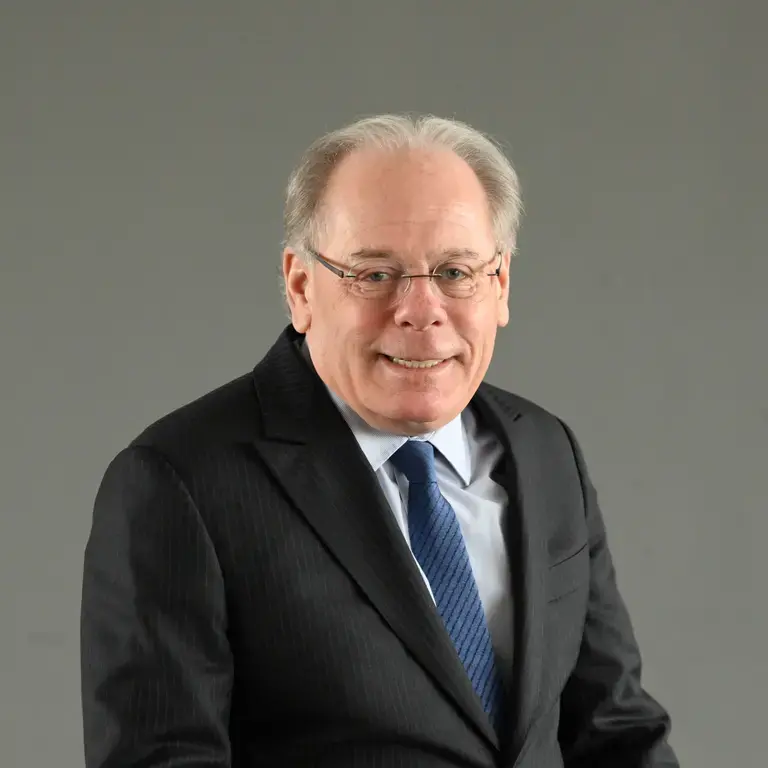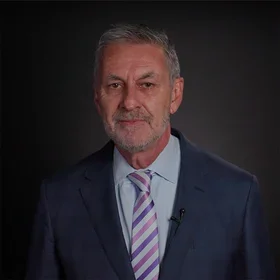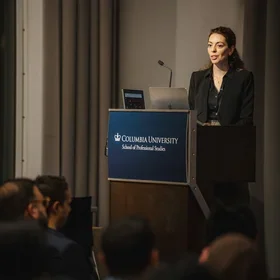By Steven Cohen, Ph.D., Director of the M.S. in Sustainability Management program, School of Professional Studies
Throughout New York City’s Climate Week events, I kept hearing voices of despair and panic when participants discussed climate change as an existential threat and detailed all the forces arrayed against responding to global warming. I do not wish to communicate any sense that the climate crisis is less than a crisis. It is a profound challenge and a threat to the well-being of all the living creatures on our planet, including over eight billion humans. But it is not insurmountable, and we are making progress in our effort to make the problem less of a problem. As my students will tell you, I don’t believe public policy ever solves problems—it simply makes them less bad.
The first step in addressing a problem is to understand its causes, effects, and the actions that need to be taken to lessen the problem. Climate change is a relatively simple environmental problem—far simpler than biodiversity, invasive species, and the impact of toxic chemicals. We know what to do, and we are slowly starting to do it. Many climate activists believe we are moving too slowly, but we must balance climate goals against other goals, such as eradicating poverty, ensuring political stability, and maintaining economic growth. What is most important is the growing consensus that extreme weather events are being made worse by human contributions to climate change. Last week in this space, I reported on a study that indicated that people who directly experienced the impacts of extreme weather events were far more likely to understand the human impact on climate than those who have been lucky enough to escape those impacts. Sadly, more and more Americans are learning these lessons the hard way as their homes are damaged or destroyed by high winds and floodwater.
Last week, we were treated to the spectacle of Florida’s climate-denying Governor Ron DeSantis activating the Florida National Guard to assist in rescue operations as Hurricane Helene hit his state and others in the southeast, killing over 100 people, leaving millions without power, and destroying property and lives. The area of Florida hit by Helene was still recovering from last year’s Hurricane Idalia. Even before Helene hit last week, USA Today’s Dinah Voyles Pulver reported that:
“Helene is expected to be the fifth hurricane to smack this roughly 200 miles of mostly rural coast between Panama City and Cedar Key in just eight years. Only three hurricanes have arrived elsewhere along the rest of the state's more than 800 miles of coastline over that time span. With the tourist hotspot of Destin to the west and Tampa to the south, the eastern Florida Panhandle forms an elbow at the Big Bend. Residents there are tired. They're stressed. They've worried as they've watched the weather, and many may have packed up and evacuated at least once. And yet, somehow they have to muster the strength this week to prepare homes and businesses, stock up on food and water and make possibly life-changing decisions about whether to stay or go . . . again. "It's like everybody is in mass PTSD. Imagine thousands and thousands of people at the same time," says Mike McKinney, who lives with his wife Maggie in a home north of Panama City, about 75 miles west of Tallahassee. They rode out the howling winds of Category 5 Hurricane Michael in their bathroom with a friend in 2018 and emerged to find the smell of destruction and uprooted trees around their home.”
While one of the reasons that the destruction is so widespread is that more people than ever live in the pathways of destruction, longtime residents frequently observe that the intensity of today’s storms is greater than ever. As folks suffering from weather impacts search for an explanation for these changed conditions, they become open to the science of human-induced climate change and begin to understand that action to mitigate and adapt to climate change is necessary and urgent. My hope is that ambitious, intelligent, and pandering politicians like DeSantis will come to abandon the denial of climate science and embrace the move to decarbonize our energy system. He has already supported programs and funding to adapt to climate change. He understands the need to protect Florida’s people from death and destruction but willfully ignores the factors that cause the damage.
These facts of climate change are influencing our culture and will eventually break through the ideological and irrational resistance to reducing human-induced climate change. Last week, I heard many people discussing increased heat, melting snow, floods, and fires and despairing as they looked toward the future and saw conditions getting worse and worse. I detected their pessimism and even panic as they looked toward the future. I expect conditions will worsen before they improve, but I am optimistic about the future because I see the start of a wide variety of actions that are incorporating environmental impacts into routine management decision-making. I see the growth of renewable energy, even as electricity use rises due to electric vehicles and artificial intelligence. Cities like New York are changing their building codes to decarbonize and reduce the impact of flooding. Many coastal cities are preparing their waterfronts for higher seas and reducing the number of impermeable surfaces to reduce flooding. Billions of dollars have been invested to make our cities more resilient as we adapt to the climate change we already experience. I see the global growth of electric vehicles and improvements in battery and solar technologies. The good news is that renewable energy is less expensive and more reliable than fossil fuels, and we are at the start of a process of transitioning away from fossil fuels. Last week, New York’s City Council enacted a law requiring all city buildings to install solar power by 2035. According to the New York City Central Labor Council:
“On Thursday, during New York City Climate Week, the New York City Council passed landmark legislation that will require New York City to install solar panels on public buildings… Introduced by Councilmember Sandy Nurse, Int. No. 353-A was passed with a supermajority of votes. With 46 co-sponsors, the legislation had the most sponsors of any legislation this session. The legislation’s ambitious commitments to install 100 megawatts (MW) of solar energy by 2030 and 150 MW by 2035 will increase the scale and speed of New York City’s public solar program.”
In the private sector, we see a growing number of major corporations reporting their greenhouse gas emissions while working to lower those emissions. And then, another source of my optimism was the thousands of participants in last week’s NYC Climate Week events. Awareness and understanding are increasing dramatically. As an educator, I notice my students today possess a far more detailed and sophisticated understanding of environmental issues than their predecessors a generation ago.
My perspective and sense of progress is derived from working on environmental policy issues for nearly fifty years. I first studied environmental politics and policy when I was in graduate school in 1975. I worked in the EPA’s water program in 1977, its Superfund program in 1980, and its leaking underground tank program in the mid-to-late 1980s. Our air and water are much cleaner today than they were when I started working on environmental issues. Fewer people are exposed to toxic waste. Since the late 1980s, over 500,000 leaking underground oil tanks have been cleaned up. We know how to maintain economic growth while protecting the planet—and we have success stories to build on.
In New York City, we will soon be recycling all our food waste. We have applied public policy and technology to environmental problems, and while they persist, many are less bad than before. On climate, I distinctly remember decision-makers ignoring the climate models at the turn of the 21st century that predicted the impacts we are currently seeing. It’s a shame that the predictions made by these climate models did not stimulate action, but now that the predicted impacts have arrived, they are influencing public perceptions and views, and the amount of public and private action on climate change has increased exponentially over the past decade. It remains tragic, though, that it is taking horrific tragedies like Hurricane Helene to convince people of the facts of climate change.
Still, I am optimistic about addressing climate change because of the enthusiasm and awareness I saw throughout New York City last week. The changes we need have begun, and momentum will continue to increase. There is no reason to panic. We have a generation-long path to navigate, but we are finally on that path; if we continue to apply human ingenuity to this crisis, it will become a routine problem, and conditions will get better rather than worse.
Views and opinions expressed here are those of the authors, and do not necessarily reflect the official position of Columbia School of Professional Studies or Columbia University.
About the Program
The Columbia University M.S. in Sustainability Management program offered by the School of Professional Studies in partnership with the Climate School provides students cutting-edge policy and management tools they can use to help public and private organizations and governments address environmental impacts and risks, pollution control, and remediation to achieve sustainability. The program is customized for working professionals and is offered as both a full- and part-time course of study.



